Paper works by Simon Schubert
Cologne artist Simon Schubert creates intricate images of stately homes and palaces simply by folding plain white sheets of paper.
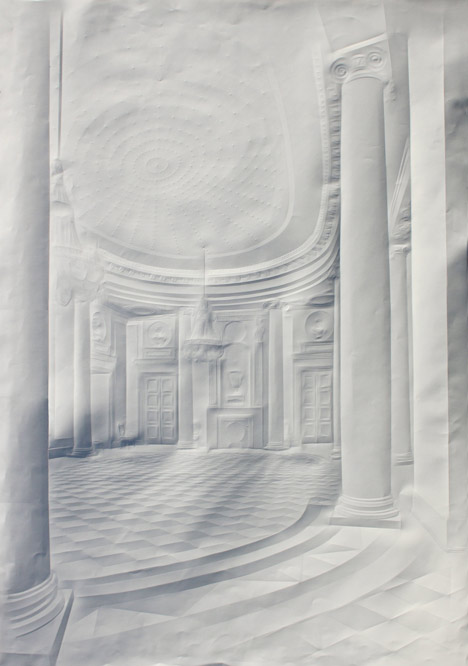
Folds in the surface create a relief of just a few millimetres, catching the light at different angles to create detailed pictures of architectural spaces.
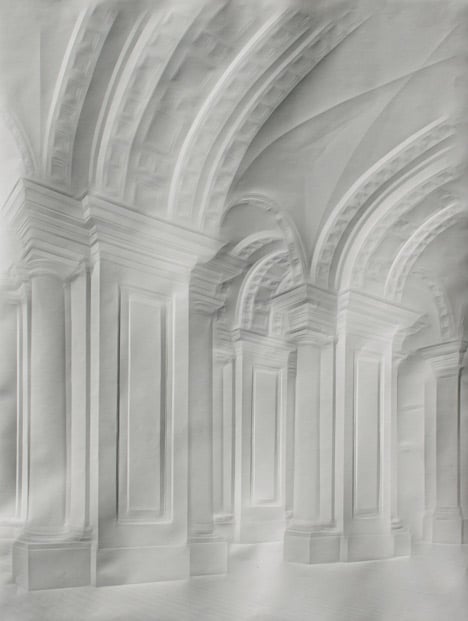
The animation above comprises 100 sheets of paper folded to resemble a fictional old house that was constructed in a CAD program, assembled as though the viewer chases a ghostly figure - in reality a flat area of paper - through the paper mansion.
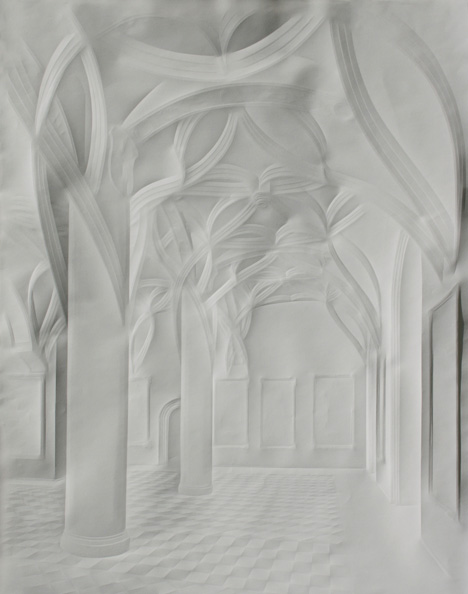
The still images depict the Berlin Stadtschloß, a former baroque royal palace in the centre of Berlin that was torn down when the east of the city was divided from the west.
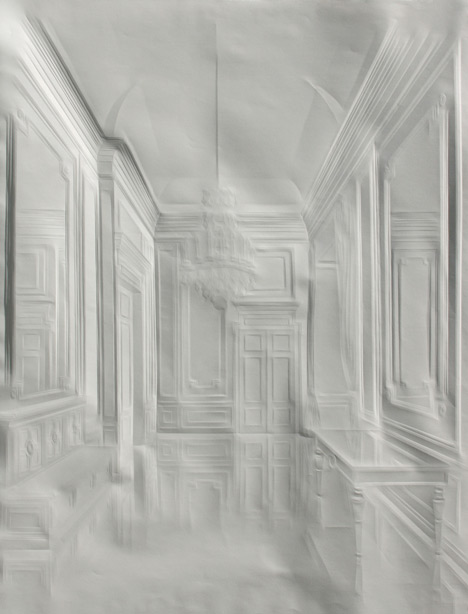
The city plans to reconstruct three of the building's facades in their original style and replace the interior with a modern structure, though work has halted for the moment due to the enormous cost.
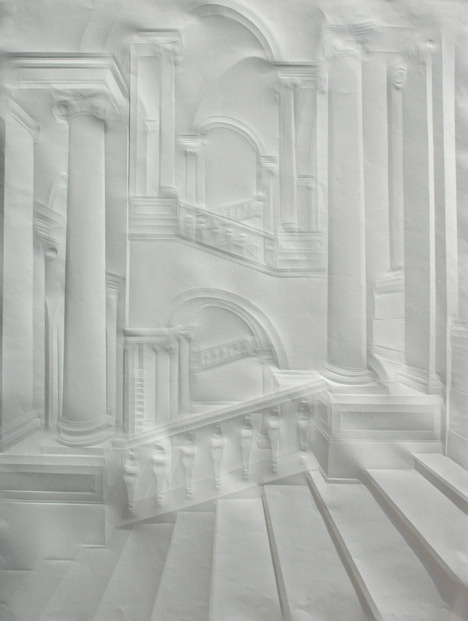
See more stories about paper »
Here's some more information from Schubert:
The artist Simon Schubert (born 1976) graduated from the academy of Fine Arts Kunstakademie Düsseldorf, Germany (sculpture master class of Professor Irmin Kamp).
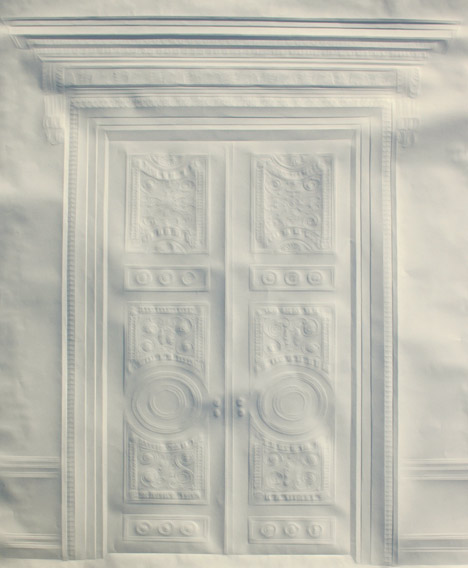
Simon Schubert, who mentions authors Samuel Beckett and Edgar Allan Poe as his biggest influences, raises the most existential and fundamental questions. Loneliness, isolation, loss and disappearance are the reoccurring issues in his paper works and sculptures. The mysterious and unsettling atmosphere his works radiate confronts the viewer with his own subconscious fears and anxieties.
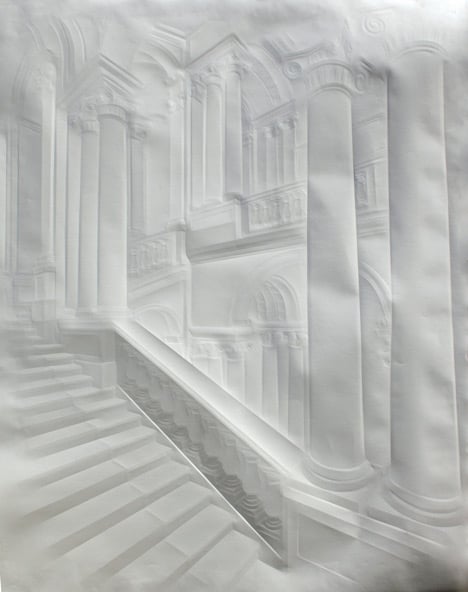
In his paper works Schubert folds and creases the sheets in an extraordinary technique, adding a plastic quality to the plain paper without any graphical aid. Staircases and hallways, insights of stately homes are shown, seemingly on the point of dissolution. The rooms are inhabited by hidden human figures whose ghost-like shadows seem to enter or leave the scene.
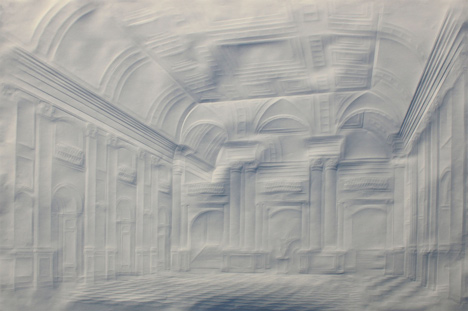
The paper works are made of plain paper. The papers are entirely folded and uncoloured.
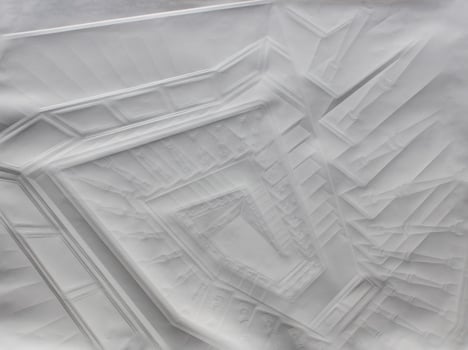
The three dimensionality of the picture is a result of a special technique. The lines, angles and circles are raised several millimetres as the result of positive and negative folding. Those reliefs change in the interplay of shadow and light and move between two and three dimensionality.
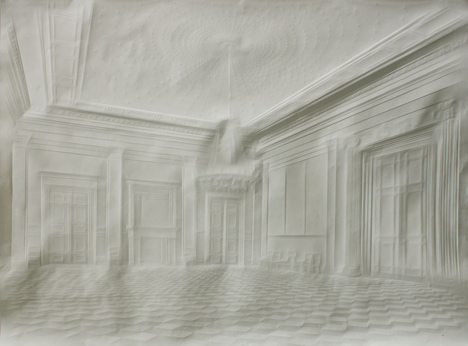
In different lighting, like the changing of daylight, the pictures change from nearly vanishing into an illusion of space and three-dimensionality.
Simon Schubert lives and works in Cologne, Germany.